- We test new trims of BMW's i4 and iX plus the all-new i7 luxury sedan.
- The new Audi Q4 e-tron shows it's even more closely related to the Volkswagen ID.4 based on our real-world results versus EPA estimates.
- The Genesis Electrified G80 officially breaks into the 300-mile range club based on our test results.
- The all-new Kia Niro EV and muscle-bound EV6 GT deliver results opposite of expectations.
Newest EV Range Tests: BMW i7, Audi Q4 e-tron and Kia Niro EV Added to Our Leaderboard
A fresh batch of real-world results
For those following our EV range test page, things may have seemed a bit quiet recently. But we've actually been extremely busy with our EV range testing and we're ready to bring you the latest results. Being in Southern California means we don't actually have to stop testing when winter rolls through — an EV's maximum range is diminished in frigid temperatures — but over the last few months, our ambient temps have mostly hovered in the mid-60-degree range. We log ambient temperatures with our mobile weather station over the entire drive and report the average temperature in the tables below, as well as on our main range page.
In case you're not aware of our process, Edmunds tests every electric vehicle on the same real-world driving route to see just how far it can travel from a full charge down to zero miles remaining. All distances are GPS-verified, and vehicles are then fully charged using a Level 2 EVSE right after to see how much energy was consumed. If you scroll through our EV range leaderboard, you'll see that most EVs have matched or exceeded their EPA range estimates in our testing. Without further ado, here are the results from our real-world lab.
Am I Ready for an EV?
- EV ownership works best if you can charge (240V) at home or at work
- If you can’t charge at home, charging at a charging station could take at least 10x longer than at a gas station
- Adding a 240V home charging system could cost up to $1,600 or more
2022 Audi Q4 e-tron 50 & 2023 Volkswagen ID.4 Pro S
We've been eagerly awaiting Audi's answer to the popular Tesla Model Y and it's finally arrived. We already had an idea of what to expect since the Q4 e-tron shares much of its hardware with the Volkswagen ID.4, but the final product can be quite different when the right tweaks have been made.
Upgrading from Volkswagen to Audi comes with an expected improvement to interior materials, but the Q4 e-tron also offers a much friendlier user interface, better handling dynamics and a quieter cabin, all wrapped up in sleek Audi sheetmetal. It also carries anywhere from a $4K to a $10K premium depending on the trim you select. The model we tested was the Q4 e-tron 50, which is the dual-motor version. We also happened to get our hands on a 2023 Volkswagen ID.4 AWD Pro S; both use the same 82-kilowatt-hour battery and have the same power output.
The Q4 e-tron 50 and ID.4 AWD both produce 295 horsepower and 339 lb-ft of torque from their electric motors. They also roll on the same size all-season tires (235/50 R20 front, 255/45 R20 rear) inflated to 44 psi at all four corners, though the Audi's are Bridgestones and the Volkswagen's are Pirellis. The Q4 outweighs the ID.4 by a small margin — 96 pounds by our scales — and the Audi has a bit less range and is slightly less efficient by EPA estimates. So how did it all shake out?
Vehicle | Curb weight | |||||
|---|---|---|---|---|---|---|
| 2022 Audi Q4 e-tron 50 | 4,963 lbs | 241 mi | 270 mi | 36 kWh/100 mi | 31.3 kWh/100 mi | 71 deg |
| 2023 Volkswagen ID.4 AWD Pro S | 4,867 lbs | 255 mi | 269 mi | 34 kWh/100 mi | 31.4 kWh/100 mi | 62 deg |
| 2021 Volkswagen ID.4 AWD Pro S | 4,900 lbs | 240 mi | 272 mi | 36 kWh/100 mi | 31.0 kWh/100 mi | 65 deg |
After a full day of driving in 71-degree weather, which is about as ideal as you can get, the Q4 managed to travel 270 miles, beating its EPA estimate by 29 miles, or 12%. The Q4's onboard trip meter underreported mileage by a small margin, showing that it traveled 3.5 fewer miles than what our GPS recorded. Given its range performance, the Q4 used about 13% less energy per 100 miles after charging back to full post-test, needing 31.3 kilowatt-hours per 100 miles versus the EPA figure of 36 kWh/100 miles.
Take a look above and you'll see Q4's results align pretty closely with those of the 2021 ID.4 we tested a few years back, both in the EPA figures and our real-world testing. For 2023, the ID.4 is claiming an extra 15 miles of range by the EPA's account, though it has virtually the same hardware. So we were curious if we'd see the same range gain in our testing. As you'll see above, we didn't. We should point out that our test-day temps were 10 degrees cooler than when we ran the Q4, which may have sapped a bit of range. However, the temps between the two ID.4s were nearly identical, so we can't explain why the 2023's theoretically increased range didn't translate to a real-world improvement. As far as trip meter accuracy, the ID.4 was more spot-on, only 1.5 miles short of our GPS after traveling 269 miles.
2022 BMW i4 eDrive40, 2023 BMW iX M60 & 2023 BMW i7 xDrive60
Early last year we tested a couple of BMW's new electric i models and came away impressed by their performance and efficiency. While the i4 M50 posted some respectable range numbers, we were especially impressed with the BMW iX xDrive50, which still holds our EV SUV range record at 377 miles (equipped with range-reducing 22-inch wheels, no less). Perhaps BMW is onto something with its unique brushed AC synchronous motors.
We recently got our hands on three more vehicles from the i line: the base-motor i4 eDrive40, the performance-oriented iX M60 and the new i7 xDrive60 luxury saloon. Here's how they did.
Vehicle | Curb weight | |||||
|---|---|---|---|---|---|---|
| 2022 BMW i4 eDrive40 Gran Coupe (19-in wheels) | 4,725 lbs | 270 mi | 307 mi | 34 kWh/100 mi | 29.3 kWh/100 mi | 57 deg |
| 2022 BMW i4 M50 Gran Coupe (20-in wheels) | 5,086 lbs | 227 mi | 268 mi | 42 kWh/100 mi | 34.1 kWh/100 mi | 75 deg |
| 2023 BMW iX M60 (22-in wheels) | 5,829 lbs | 274 mi | 325 mi | 43 kWh/100 mi | 37.4 kWh/100 mi | 75 deg |
| 2022 BMW iX xDrive50 (22-in wheels) | 5,707 lbs | 315 mi | 377 mi | 39 kWh/100 mi | 32.0 kWh/100 mi | 73 deg |
| 2023 BMW i7 xDrive60 (21-in wheels) | 5,930 lbs | 308 mi | 320 mi | 39 kWh/100 mi | 35.5 kWh/100 mi | 61 deg |
The i4 was tested first and easily surpassed its EPA range estimate of 270 miles (when fitted with the optional 19-inch wheels), traveling 307 miles on our range loop. This i4 had slightly chillier ambient temps to contend with, running in 57-degree weather, compared to the i4 M50's 75-degree average. So it's not surprising that we didn't see quite the same overachievement this time around. It's worth noting that the i4's 19-inch optional wheels and tires come with a 31-mile range penalty compared to the standard 18s, according to EPA numbers.
The iX M60 was next on deck and benefitted from a lovely summer-weather day in the middle of winter. Running in a very temperate 75 degrees, it unsurprisingly easily outperformed its 274-mile EPA range estimate, traveling 325 miles before retiring — an 18.6% improvement. Based on our previous iX test result with a 19.7% gain in range, this is almost exactly the range we expected to see. It's worth noting that both iXs were fitted with the same 22-inch wheel and tire package.
By the time it was the i7's turn, air temps had dropped back to an average of 61 degrees. Before we embarked on our instrumented test drive, our rating team noticed that the i7's range seemed to drop a bit quicker than other BMW EVs. Our test results would confirm this suspicion, as the i7 achieved its EPA range target by the thinnest margin, traveling just 12 miles, or 3.8%, beyond its target. Aside from being the heaviest Bimmer of the group, there's no obvious explanation for these results.
2023 Genesis Electrified G80
The Genesis Electrified G80 was officially the first electric vehicle to wear a Genesis badge, even though we managed to drive and test the all-electric GV60 ahead of it. The G80 is the brand's midsize luxury sedan offering, originally designed to accommodate a conventional gas engine. That powertrain was removed and replaced with two permanent magnet electric motors driving all four wheels, making a combined 365 horsepower and 516 lb-ft of torque. The G80 gets a slightly larger 87.2-kWh battery, compared to the GV60 and Electrified GV70's 77.4-kWh pack.
While we think Genesis did a commendable job with the EV retrofit, small compromises, mainly in trunk space, had to be made. But what about range and efficiency?
Vehicle | Curb weight | |||||
|---|---|---|---|---|---|---|
| 2023 Genesis Electrified G80 | 5,052 lbs | 282 mi | 309 mi | 35 kWh/100 mi | 30.6 kWh/100 mi | 74 deg |
The Electrified G80's all-season Michelins (245/45 R19 front, 275/40 R19 rear) were inflated to surprisingly reasonable pressures at 36 psi all around, which is good news for ride comfort. We're used to seeing pressures in the 40-plus psi range for EVs these days, which can lead to a stiffer ride. At the end of an ideally beautiful day of driving in 74-degree weather, we saw over 300 miles of range out of the G80, easily matching its estimated range of 282 miles. Although this wasn't quite the margin we saw with the GV60 (which outperformed its range estimated by 16.6%, compared to the G80's 9.6%) we think it's safe to say that Genesis models deliver on their numbers.
2023 Kia EV6 GT & 2023 Kia Niro EV
Kia has been on a roll recently and we've got two of our recent favorites here that bookend Kia's current EV lineup: the relatively mild but sensible Kia Niro EV and the wild, 576-horsepower-flaunting EV6 GT.
While the Niro EV has been totally redesigned this year and improved in virtually every area, it utilizes the same size 64.8-kWh battery pack and 201-hp electric motor driving the front wheels as the previous model. Despite the carryover hardware, the 2023 model's EPA estimate says it's now good for an extra 14 miles of range. We were curious if we'd actually see those gains in the real world.
The EV6 GT is the top trim and performance version of the EV6 line. We tested both the single-motor rear-drive EV6 Wind and dual-motor EV6 GT-line last year, the latter of which failed to meet its EPA estimated range in its first round of testing. (We later tested a second GT-line model that did meet its range estimate.) Two of the EV6s we tested last year showed that they could meet their targets, but by smaller margins than other electric vehicles. The EV6 GT, we assumed, would follow suit.
So how did these 2023 models do?
Vehicle | Curb weight | |||||
|---|---|---|---|---|---|---|
| 2023 Kia Niro EV | 3,832 lbs | 253 mi | 280 mi | 29 kWh/100 mi | 25.6 kWh/100 mi | 68 deg |
| 2020 Kia Niro EV | 3,916 lbs | 239 mi | 285 mi | 30 kWh/100 mi | 25.3 kWh/100 mi | 67 deg |
| 2023 Kia EV6 GT | 4,793 lbs | 206 mi | 238 mi | 42 kWh/100 mi | 35.2 kWh/100 mi | 61 deg |
| 2022 Kia EV6 Wind | 4,321 lbs | 310 mi | 323 mi | 29 kWh/100 mi | 26.0 kWh/100 mi | 67 deg |
| 2022 Kia EV6 GT-Line | 4,649 lbs | 274 mi | 283 mi | 32 kWh/100 mi | 29.5 kWh/100 mi | 66 deg |
While the new Niro EV exceeded its range estimate, it actually did not go as far as the previous-generation model we tested, calling it quits at 280 miles — 5 miles short of the 2020 car. Although this is less than a 2% difference, we were still a bit surprised since the new car had virtually identical weather temps and is even slightly lighter than the old car (84 pounds). The only other thing we could point to is tires. Both cars wear the same-size wheels and tires (215/55 R17), inflated to identical pressures (36 psi) but the old car had Michelin Primacy MXV4s compared to the new Nexen N Priz S tires. It's possible the old Michelins (now discontinued) were a bit more efficient.
We had pretty modest expectations for the EV6 GT based on our prior experience with the model, but it ended up surprising us. Both EV6 variants before it either beat their estimates by fairly small margins (3.3% and 4.2%) or missed it entirely. The GT managed an extra 32 miles over its EPA estimate, an increase of 15.3%, despite running in the chilliest temperatures of the three, averaging 61 degrees over the course of the day. The GT's consumption was also better by just over 16% but is still far more electron-hungry than its stablemates due to its larger motors and stickier 21-inch summer performance tires.
2022 Mercedes-Benz EQB 350
The EQB was an EV we were looking forward to since it's essentially the electrified version of the GLB, which tops our extra-small SUV rankings. The problem with the EQB is not that it's a bad vehicle; it's that it doesn't do anything better than its competition for the price.
The two EQB variants available are both dual-motor models providing all-wheel-drive traction. The entry-level 300 4Matic produces a combined 225 horsepower and 288 lb-ft of torque, while the EQB 350 4Matic, the car we tested, makes 288 hp and 384 lb-ft. Both come with a 70.5-kWh battery pack, 66.5 kWh of which is usable. Peak fast-charging speeds are lower than average at 100 kilowatts. For context, the Audi Q4 e-tron can charge at up to 150 kW while the Tesla Model Y maxes out at 250 kW. However, even at those speeds, Mercedes says the EQB can recharge the battery from 10% to 80% in as little as 32 minutes, which is still reasonable in our books.
So what about range and efficiency?
Vehicle | Curb weight | |||||
|---|---|---|---|---|---|---|
| 2022 Mercedes-Benz EQB 350 | 4,812 lbs | 227 mi | 242 mi | 35 kWh/100 mi | 32.2 kWh/100 mi | 70 deg |
| 2022 Audi Q4 e-tron 50 | 4,963 lbs | 241 mi | 270 mi | 36 kWh/100 mi | 31.3 kWh/100 mi | 71 deg |
| 2021 Tesla Model Y Long Range | 4,405 lbs | 326 mi | 317 mi | 27 kWh/100 mi | 26.2 kWh/100 mi | 62 deg |
As you can see, the EQB does deliver on its numbers, but not by the margins that we saw in any of the EQS models we tested before it. Compared to the Q4 e-tron, the EQB is marginally less efficient and has less range. Both of these German steeds pale in comparison to the Tesla Model Y in range and efficiency, even with the Model Y running in the coolest weather and falling short of its range target. Had the EQB arrived three years ago, when there were fewer options on the market, we might be singing a different tune. In this day and age, we'll take a pass on the EQB.
2023 Polestar 2 Long Range Dual Motor
The Polestar 2 was one of the first EVs to offer a viable challenge to Tesla's Model 3. Neither has really changed much in the last few years beyond incremental improvements in range and efficiency.
For 2023, the dual-motor Polestar's EPA range nudges up to 260 miles from the previous year's 249 miles. There is also the option to have an extra 68 horsepower and 15 lb-ft of torque beamed to your car over the air (the Performance Pack option), though our test vehicle did not get that boost.
So did we see those 11 added miles in the real world?
Vehicle | Curb weight | |||||
|---|---|---|---|---|---|---|
| 2023 Polestar 2 Long Range Dual Motor | NA | 260 mi | 282 mi | 34 kWh/100 mi | 31.8 kWh/100 mi | 67 deg |
| 2022 Polestar 2 Long Range Dual Motor | 4,723 lbs | 249 mi | 288 mi | 38 kWh/100 mi | 29.3 kWh/100 mi | 61 deg |
The short answer is no. In fact, we saw 6 fewer miles than we previously recorded, and we even had slightly warmer temperatures this time around. We were a bit remiss in not weighing the 2023 Polestar when it came through, but we'd expect those differences, if any, would have had little effect on our results.
As far as conclusions go, the results are close enough that we don't think the 2023 Polestar 2 has gotten any less efficient, but we also don't think it's improved enough to yield any tangible result in the real world. Now, that Performance Pack software upgrade could be another story. We're excited to find out.
Edmunds says
The Edmunds team has been putting in long hours and thousands of miles behind the wheel to bring you the latest real-world EV range test results. While range is not the only important aspect of an EV, we realize it's still a main priority for a lot of people either considering a switch to an EV or looking to buy their next one. As always, we welcome your feedback and questions regarding any of the results you see here. Also, be sure to check out our latest comprehensive ratings of all electric vehicles on Edmunds' EV rankings page.

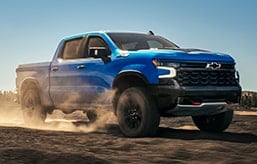
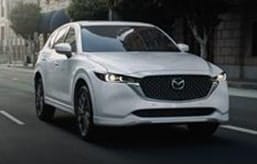
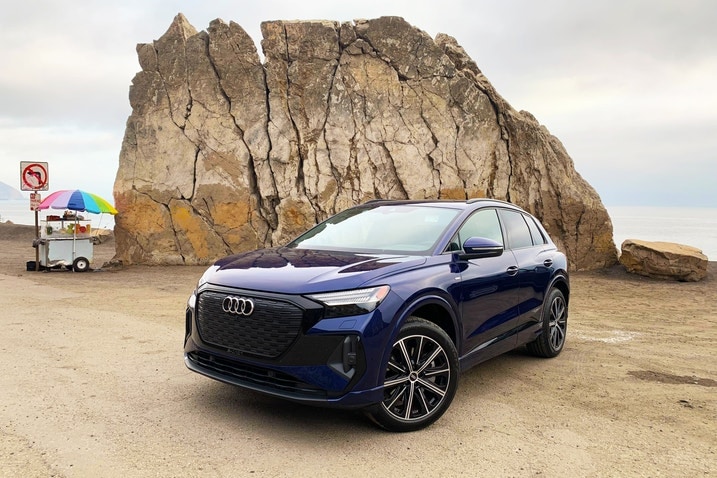
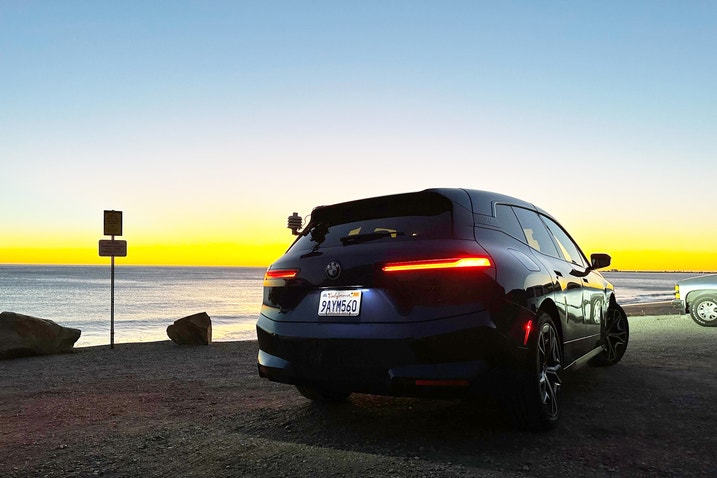
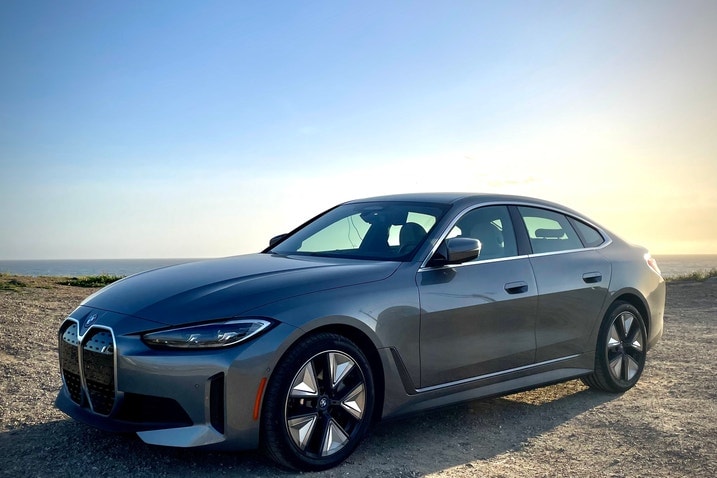
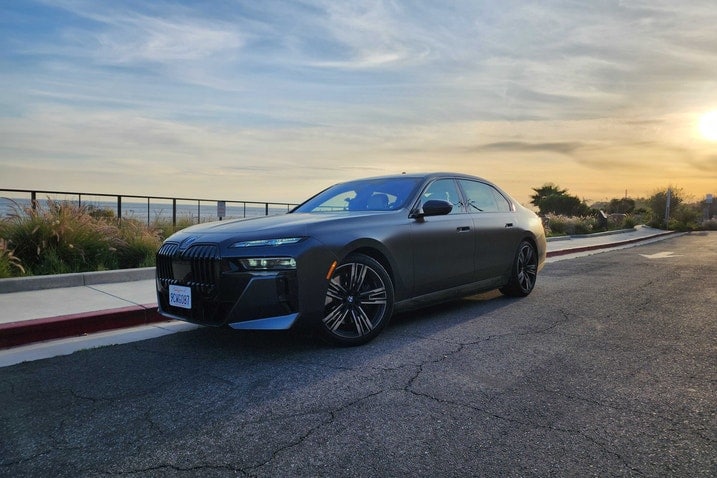
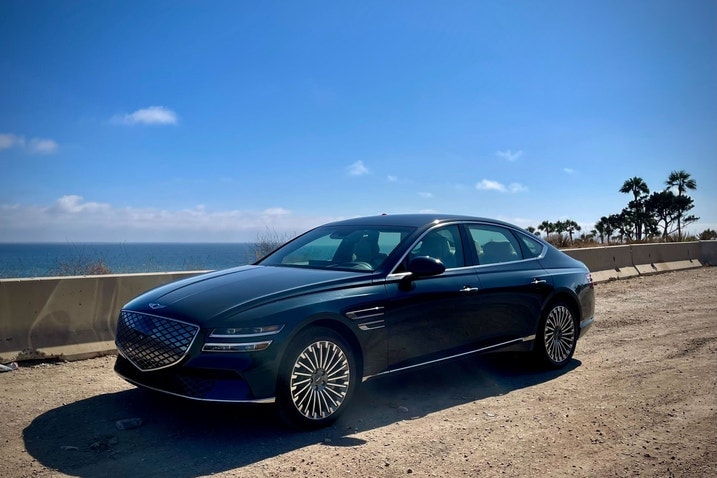

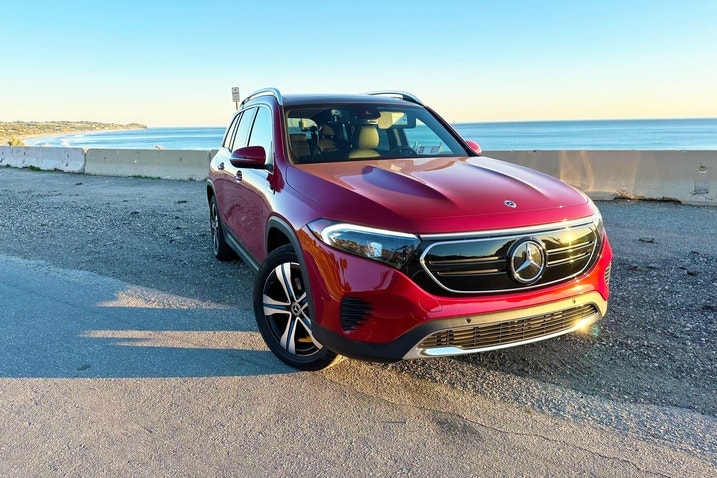
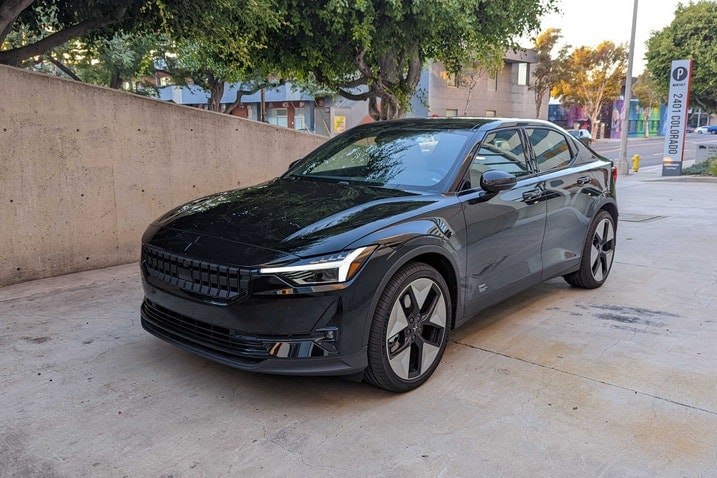
 by
by